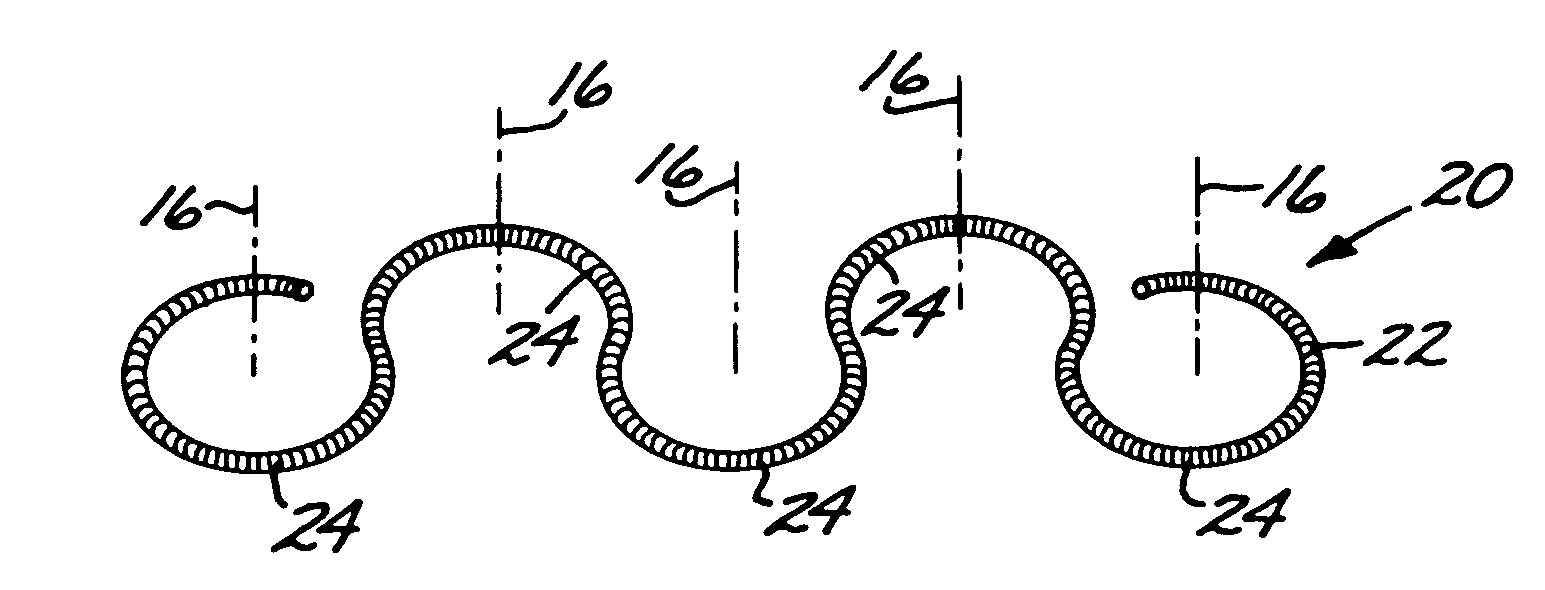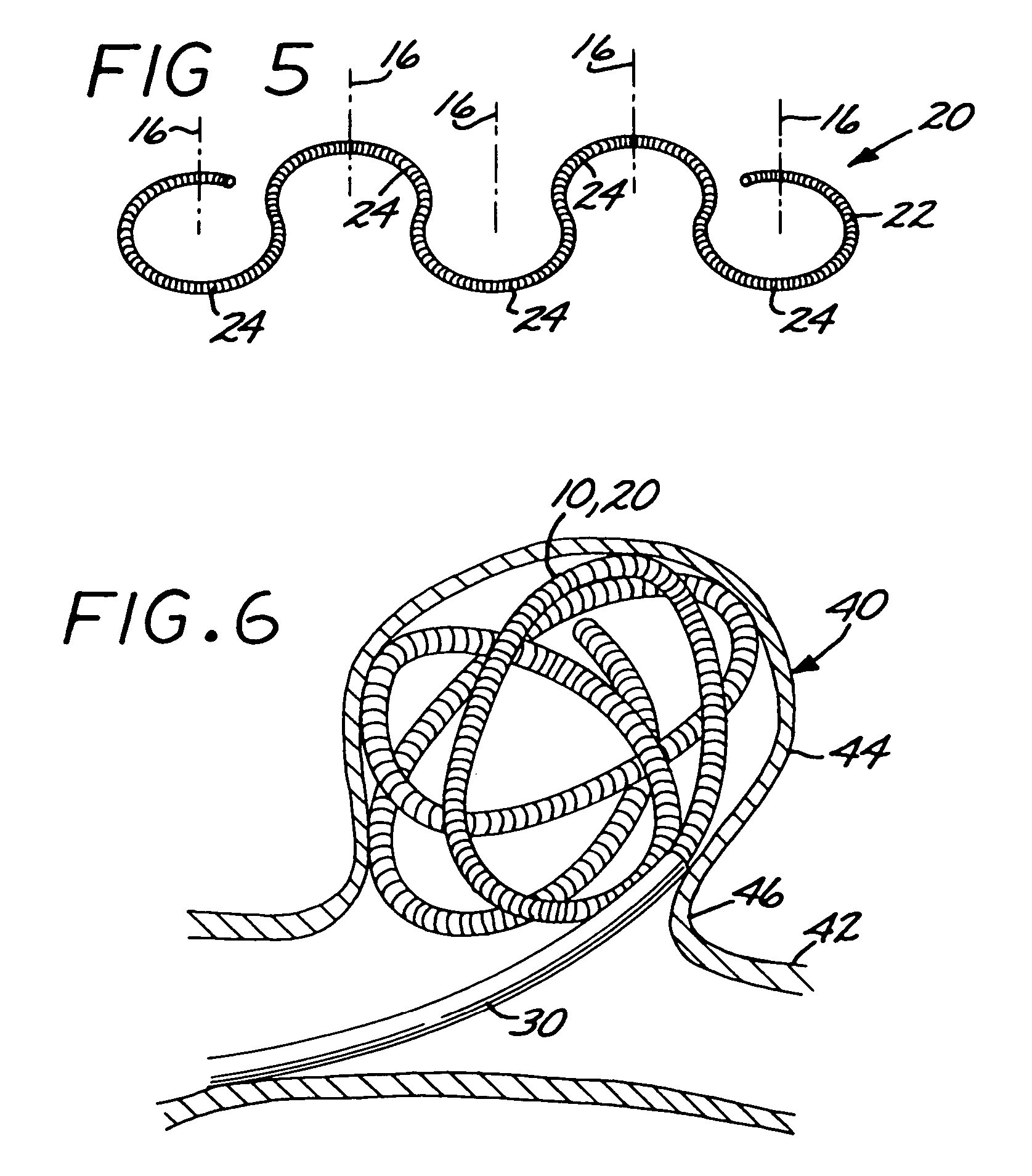Microcoil vaso-occlusive device with multi-axis secondary configuration
a vaso-occlusive device and micro-coil technology, applied in contraceptive devices, medical science, surgery, etc., can solve problems such as and achieve the effect of minimizing the degree of compaction experienced and minimizing shifting or tumbling
- Summary
- Abstract
- Description
- Claims
- Application Information
AI Technical Summary
Benefits of technology
Problems solved by technology
Method used
Image
Examples
Embodiment Construction
[0023]Referring first to FIGS. 1-4 and 6, a microcoil vaso-occiusive device 10, in accordance with a preferred embodiment of the invention is shown. The device 10 comprises a suitable length of wire formed into the primary configuration of a helical microcoil 12 (FIG. 2). Suitable materials for the device 10 include platinum, rhodium, palladium, rhenium, tungsten, gold, silver, tantalum, and various alloys of these metals. Various surgical grade stainless steels may also be used. Preferred materials include the platinum / tungsten alloy known as Platinum 479 (92% Pt, 8% W, available from Sigmund Cohn, of Mount Vernon, N.Y.) and titanium / nickel alloys (such as the titanium / nickel alloy known as “nitinol”). Another material that may be advantageous is a bimetallic wire comprising a highly elastic metal with a highly radiopaque metal. Such a bimetallic wire would also be resistant to permanent deformation. An example of such a bimetallic wire is a product comprising a nitinol outer layer...
PUM
 Login to View More
Login to View More Abstract
Description
Claims
Application Information
 Login to View More
Login to View More - R&D
- Intellectual Property
- Life Sciences
- Materials
- Tech Scout
- Unparalleled Data Quality
- Higher Quality Content
- 60% Fewer Hallucinations
Browse by: Latest US Patents, China's latest patents, Technical Efficacy Thesaurus, Application Domain, Technology Topic, Popular Technical Reports.
© 2025 PatSnap. All rights reserved.Legal|Privacy policy|Modern Slavery Act Transparency Statement|Sitemap|About US| Contact US: help@patsnap.com



